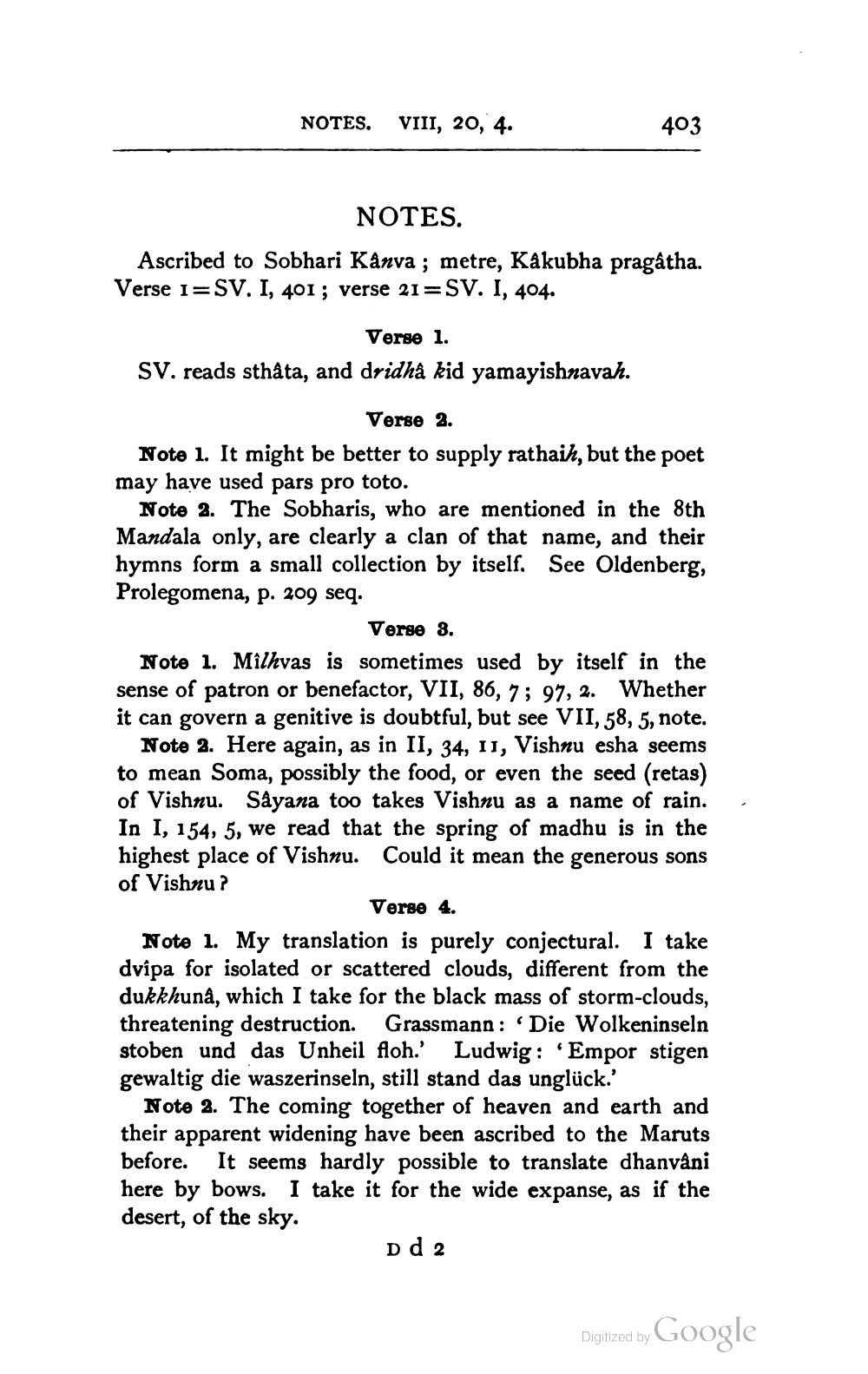________________
NOTES.
VIII, 20, 4.
403
NOTES. Ascribed to Sobhari Kanva; metre, Kakubha pragatha. Verse 1=SV. I, 401; verse 21=SV. I, 404.
Verse 1. SV. reads sthậta, and dridhå kid yamayishnavah.
Verse 2. Note 1. It might be better to supply rathaih, but the poet may have used pars pro toto.
Note 2. The Sobharis, who are mentioned in the 8th Mandala only, are clearly a clan of that name, and their hymns form a small collection by itself. See Oldenberg, Prolegomena, p. 209 seq.
Verse 3. Note 1. Milhvas is sometimes used by itself in the sense of patron or benefactor, VII, 86, 7; 97, 2. Whether it can govern a genitive is doubtful, but see VII, 58, 5, note.
Note 2. Here again, as in II, 34, 11, Vishnu esha seems to mean Soma, possibly the food, or even the seed (retas) of Vishnu. Såyana too takes Vishnu as a name of rain. In I, 154, 5, we read that the spring of madhu is in the highest place of Vishnu. Could it mean the generous sons of Vishnu ?
Verse 4. Note 1. My translation is purely conjectural. I take dvipa for isolated or scattered clouds, different from the dukkhunâ, which I take for the black mass of storm-clouds, threatening destruction. Grassmann: Die Wolkeninseln stoben und das Unheil foh. Ludwig: 'Empor stigen gewaltig die waszerinseln, still stand das unglück.'
Note 2. The coming together of heaven and earth and their apparent widening have been ascribed to the Maruts before. It seems hardly possible to translate dhanvani here by bows. I take it for the wide expanse, as if the desert, of the sky.
Dd 2
Digitized by
Digized by Google




